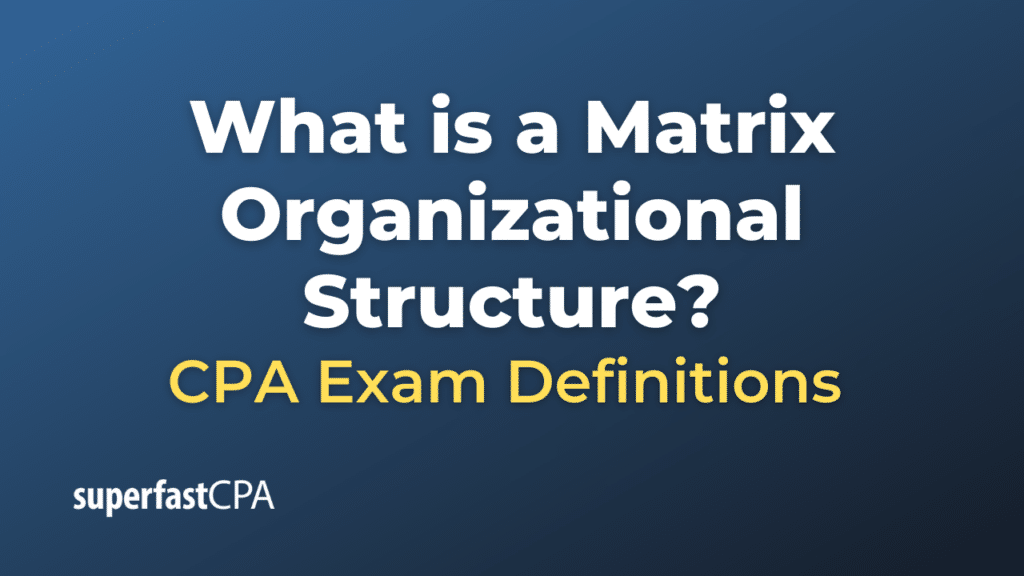Matrix Organizational Structure
A matrix organizational structure is a type of organizational design that groups employees by both function and product or project. This structure creates a dual reporting relationship, where an employee reports to two managers: one manager heads up a product or project team and the other manager leads a functional area (like marketing, operations, or finance).
The matrix structure is often used in companies that operate in a dynamic environment, need faster decision making, and have diversified products and services. It provides a flexible and adaptable structure that meets the needs of both the company and its employees. It is particularly common in large multinational companies, where different products or projects may need different functional expertise.
Advantages of the matrix organizational structure include:
- Increased Collaboration: Employees from various departments work together on projects, which can lead to increased cooperation and knowledge sharing.
- Resource Efficiency: Resources can be allocated and utilized more efficiently, as the same resources can be used for different projects.
- Increased Flexibility: The company can respond more quickly and effectively to changes and can manage multiple projects at the same time.
- Develops Skills and Expertise: Employees can develop their skills in their functional area, while also gaining experience and knowledge in different products or projects.
However, there are also potential drawbacks:
- Dual Authority: The dual reporting relationships can lead to confusion and conflicts over priorities and resources.
- Complexity: The structure can be complex and difficult to manage, particularly in larger organizations.
- Internal Politics: There can be increased potential for power struggles and conflicts between functional and product managers.
- Costly: Maintaining this kind of structure may require more managers and thus can be more expensive.
In essence, while the matrix structure offers benefits in terms of flexibility, adaptability, and efficient resource allocation, it can also introduce complexities and challenges related to managing dual reporting relationships and potential conflicts.
Example of a Matrix Organizational Structure
Let’s consider a hypothetical technology company, TechWorld, that has adopted a matrix organizational structure.
TechWorld is divided into different functions such as:
- Research and Development
- Production
- Marketing
- Sales
- Human Resources
Each function has a manager who is an expert in their respective field.
Simultaneously, TechWorld is managing multiple projects, such as:
- Project A: Building a new cloud storage service
- Project B: Developing a new mobile operating system
- Project C: Creating a new artificial intelligence software
Each of these projects also has a project manager who is responsible for coordinating all activities related to that project.
In this matrix structure, a software engineer from the Research and Development function might be part of Project A and report to both the manager of Research and Development and the project manager for Project A. Similarly, a marketing executive might be part of Project B, reporting to both the Marketing manager and the project manager for Project B.
This structure allows TechWorld to effectively manage resources across different functional areas and projects. It enables collaboration and communication across different parts of the organization, potentially sparking innovation. At the same time, it requires careful coordination to manage the complexities and potential conflicts that might arise from dual reporting relationships.













